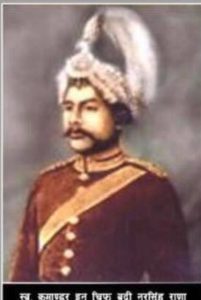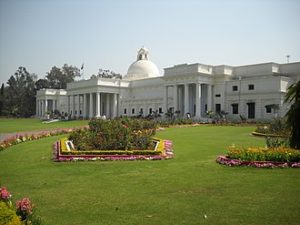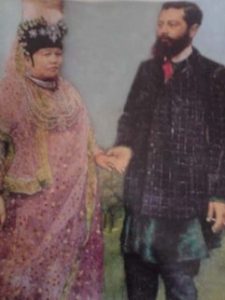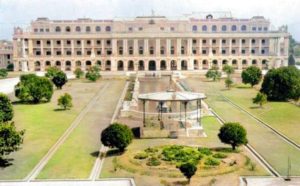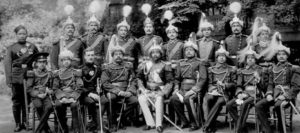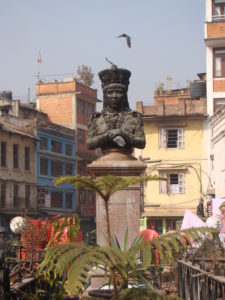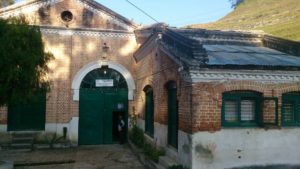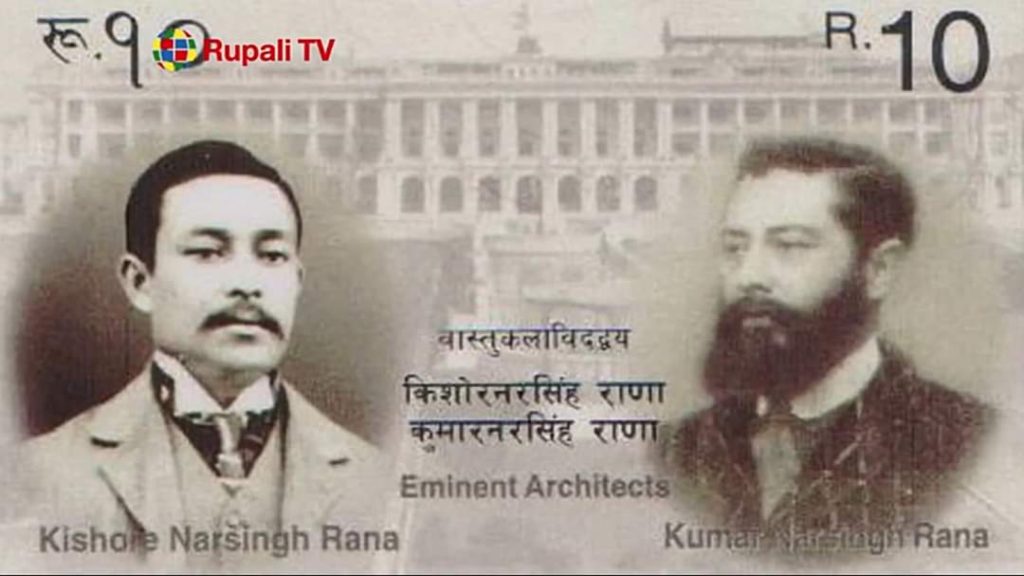Plato the Greek philosopher formulated the universal truism, “Necessity is the mother of invention”. It complements the most basic human instinct – that of survival. People who recognize opportunity in adversity will oftentimes achieve the pinnacle of success. The story of the Narsingh brothers manifests itself as a good example of the Phoenix rising.
The Kot Massacre had become history by the time Prime Minister Jung Bahadur Rana consolidated his power and was confident enough to leave Nepal in the hands of his brothers and make an epochal visit to England in 1850 A.D., the first visit any ruler of the Indian subcontinent had made until then. He had been honoured with an invitation from Queen Victoria at the behest of the East India Company. He gave the prime minister’s job to Bam Bahadur Rana and the acting Commander-in-Chief of the Army post to Badri Narsingh Rana before leaving for England. All had gone seemingly well in Nepal by the time Jung returned from his successful visit to England and France. Alas, a plot had been brewing, unbeknownst to Jung. Only 10 days later a remorseful Bam, visibly shaken by the burden of a secret he was carrying close to his chest, spilled the beans of a plot to assassinate Jung. A sobbing Bam confided to Jung that the plotters had even inducted Bam to be a part of it and he had tacitly agreed to it not to make them suspicious. Bam had not come forward earlier he confessed because he was afraid of what Jung would think of him. Jung listened to this outpouring with shock and disappointment. He trusted these people so! He knew that he had to act quickly as the very next day the plan was afoot to assassinate him on his way to Basantapur!
General Badri Narsingh Rana
The ringleaders were quickly apprehended and brought in chains to Kot Armoury in Hanuman Dhoka. Punishments were meted out swiftly by Prime Minister Jung Bahadur Rana and the main conspirators, Sahebjiu Upendra Bikram Shah, brother Badri Narsingh Rana and cousin Jaya Bahadur Rana were sent to India for incarceration at the Allahabad Fort for a period of 5 years. Remarkably, they were forgiven by Jung, reportedly at the persuasion of his grieving mother Ganesh Kumari, and both Upendra Bikram and Badri Narsingh returned to Nepal while Jaya Bahadur had passed away in confinement. Badri Narsingh Rana was removed from the Roll of Succession to the premiership and sent to live at Palpa. His sons Kedar and Dhoj from his first marriage were mere young boys and so they were not removed from the Roll. Bhairab, Kumar, Kishore and Amir were born from junior wives in Palpa. Badri Narsingh had married Moha Kumari, a daughter of General Gagan Singh Bhandari, the same person whose assassination had precipitated the Kot Massacre and the rise of Jung Bahadur. Kumar Narsingh was the elder of the sons and Kishore Narsingh the younger. General Badri Narsingh Rana no longer played a role in governing the country and so he saw no future for his young sons in the military. He decided to instill in them the need to gain an education.
Thomason College of Civil Engineering in Roorkee
Thomason College of Civil Engineering in Roorkee now located in the Indian state of Uttarakhand was started in 1847 A.D. by Sir James Thomason, Lieutenant Governor of the North-Eastern Provinces of British India. India needed modern infrastructure such as ports, railways, power-plants, warehouses and commercial complexes to keep pace with rising trade and local expertise had to be developed to keep pace with the growing demand in engineering. Jung Bahadur Rana was keen on modernizing the country after he was enlightened by what he saw in England and France during his epochal visit of 1850 A.D. Both the brothers Kumar and Kishore decided to get enlisted in the engineering college after taking compulsory military training. It was their moment of truth as they knew they would never make it to the upper echelon of Rana rule.
Kumar Narsingh and his wife
Now the time had come for Nepal to improve its rudimentary infrastructure, make advances in the field of science and technology, in health and education. It was time to harness water resource of the country and generate electricity to light up the palaces and the public places he had built. This time the advantage was very much with Chandra as home-grown technocrats had been developed in the field of medicine, engineering, agriculture and education. Nepalese had graduated from Indian colleges eager to contribute in the development of the nation and a few had even studied in faraway Japan with its own advanced education system heralded by the Meiji Restoration. Chandra relied on his two talented cousins Kumar and Kishore to fulfill his dreams.
Singha Durbar was a pet project of Chandra since he became Maharajah. There is an interesting anecdote on how the project got started. It is said that one day Chandra and his Rani Loke Bhakta Luxmi Devi were looking at Kathmandu’s parade ground Tundikhel from the balcony of his palatial but crumbling Jung Bahadur Rana era abode at Thapathali. Beyond it gleamed magnificent palaces built by his brother Maharajah Bir Shumsher. The Rani sighed and asked her husband when they would live amidst such splendour. Chandra there and then assured his Rani that she would soon have the best palace money could buy, more opulent than any of the palaces built by Bir! Chandra entrusted the Singha Durbar Project, modeled after the much-storied Versailles Palace, to his cousins the engineers Narsingh brothers. It was completed in June 1908 A.D. The building was the most opulent and largest of its type in Asia until the 1950’s. It had grand reception halls, 3,000 rooms, and 7 courtyards and well laid out gardens. Chandra bequeathed the building to the state to serve as office and residence of the Rana prime ministers of Nepal. Alas, Rani Loke Bhakta could not enjoy living in it as she passed away in an untimely manner in 1905 A.D.
Singha Durbar after completion in 1908 A.D.
Chandra had planned his visit to England following in the footsteps of his famous uncle and finally he received the go-ahead in 1908 A.D. He included Colonel Kishore Narsingh in his entourage so that he would experience first-hand the magnificent palaces and public places of London to learn from and emulate. He would also be meeting some of the leading engineers in the field for consultation. Maharajah Chandra Shumsher returned from England his imagination fired up just like his uncle Jung Bahadur’s had been over half a century earlier. A palace building spree was soon initiated by Maharajah Chandra fully confident in their design and execution by the Narsingh brothers. Many of these are extant even today: Kaiser Mahal, Shree Durbar, Shital Niwas, Luxmi Niwas, Baber Mahal and Harihar Bhawan.
Patan did not have reliable water supply. The old system laid down under Bhimsen Thapa had all but crumbled. Chandra’s wife Maharani Loke Bhakta made it her heart’s desire to supply Patan with fresh running water. Maharajah Chandra entrusted the water supply project to the Narsingh brothers. Maharani Loke Bhakta’s bronze bust was installed inside a fountain in the town square in tribute by the grateful people of Patan after her untimely demise.
Chandra started the first hydro-electric project in Nepal in 1911 under the general supervision and monitoring of General Padma Shumsher Rana. The Chandrajyoti Pharping Hydroelectric Power Station building was designed and constructed by the Narsingh brothers Kumar and Kishore and its A.C. generators were brought from The English Electric Co. Ltd., London, England and installed. The first house to get lit up as a test-case was in Khokana and one can see it even today, the house displaying a plaque on its facade marking the occasion. King Prithivi Bir Bikram Shah heralded the advent of electricity in Nepal by turning on a switch at a gala event organized in Tundikhel on 22nd May 1911 A.D. at 6:30 PM. Henceforth Kathmandu would have electricity in its palaces and public areas, street lights would replace gas lamps and homes would be lit up by light bulbs replacing tuki wick lamps.
Pharping Hydroelectric Powerplant building
The Narsingh brothers had inherited property behind the palace built by General Badri Narsingh Rana, the proto-Kaiser Mahal. There they built for themselves a row of manor houses. New owners took over these buildings by the late 1950’s. Kumar Narsingh’s property became the Kathmandu Guest House in late 1960’s. Kishore Narsingh’s property now houses the popular restaurants Ying Yang and Third Eye. Another property was bought by the mother of Ganesh Man Singh the Congress party supremo known as Chaksi Bari, recently converted to a hotel called Thamel Villa. These developments have in fact preserved the collective memory of the celebrated Narsingh brothers lest it be lost to posterity.



